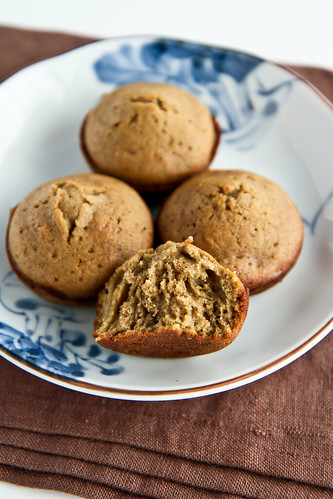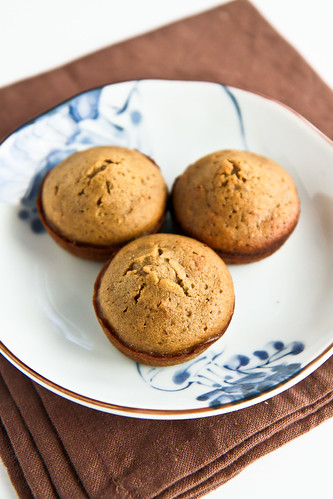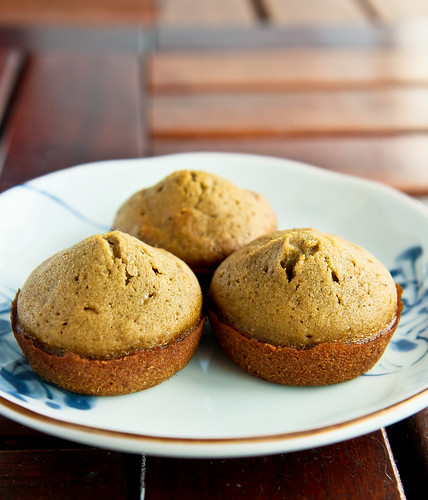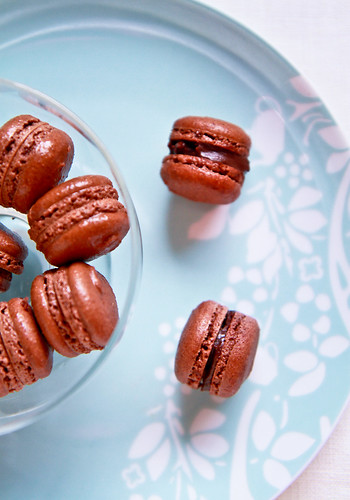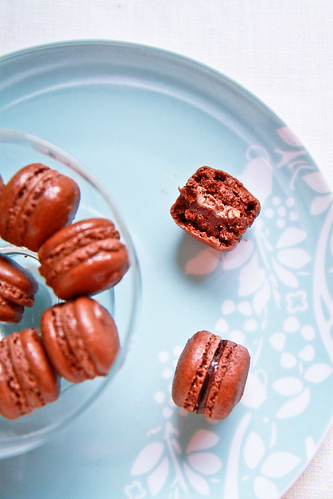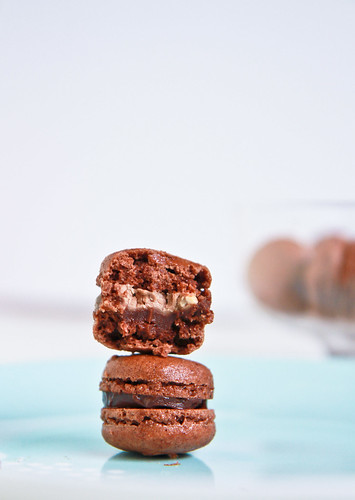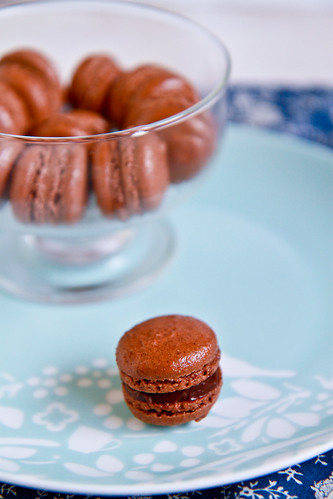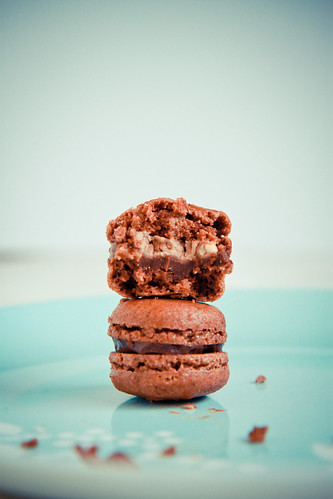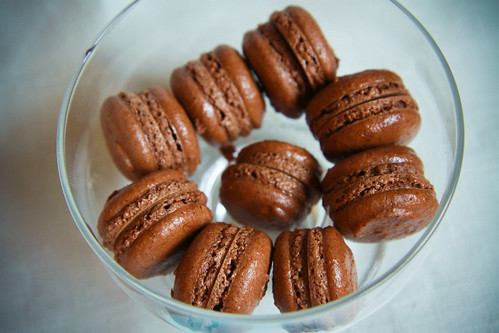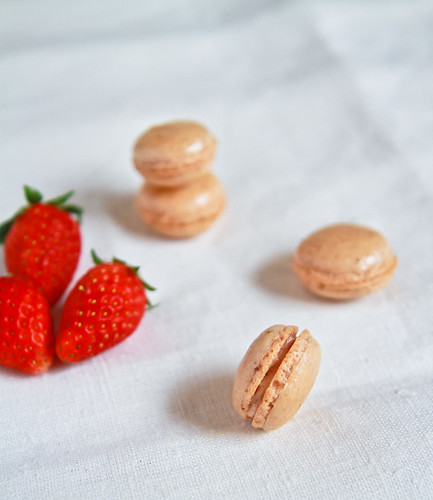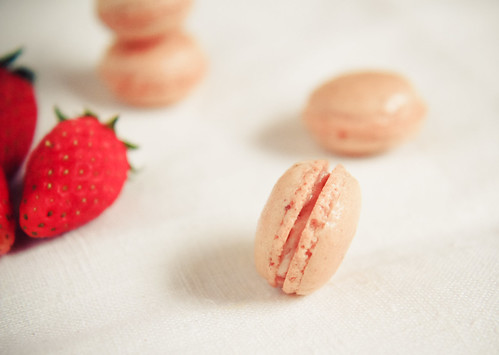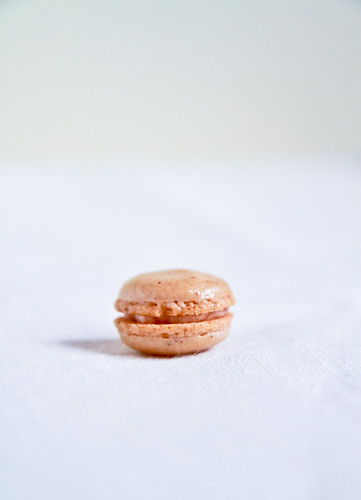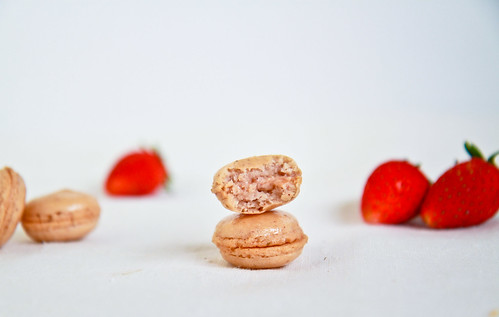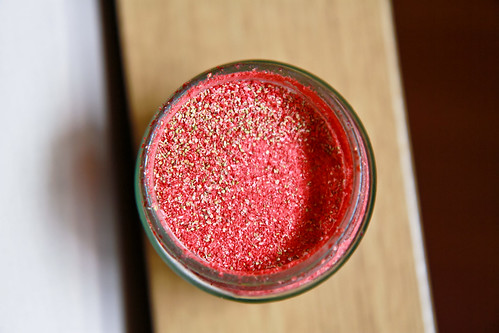If you asked me a couple of years ago if I would ever utter the words kouign amann (pronounced as quiee-ah-mahn) in Singapore, I would have thought you're nuts. But well oh well, with the great number of 'hipster' cafes and patisseries and bakeries popping up in Singapore lately, it appears that pastries like this king of laminated pastry has made its appearance in our sunny little island.
I might be a bit slow on the take up since I never did patronize Tiong Bahru Bakery when it was hip since it was a tad out of the way for me, but when it opened at Raffles City, my kind colleague/roommate got me a croissant and in her words, "this thing that the staff recommended me to get". She couldn't remember the name of the pastry, but when I saw it, I had a little sneaking suspicion that this might be a kouign amann, but I wasn't very sure because from my experience, kouign amanns generally look more rustic and bread like whereas Gontran Cherrier's version looked a tad puff pastry/danish like. Nevertheless when I bit into the pastry, I was sure. Nothing else in this world can taste so sinfully buttery and sugary!
I first got a taste of this heavenly pastry when I was in Paris. I had been stuffing my face silly with macarons, entremets and sweet gâteaux and was growing quite sick of them. Although I like cakes, I'd much prefer pastries and breads. So naturally I did some googling to check what other pastry I should have other than the usual croissants and danishes, and I stumbled upon this mysterious pastry known as the kouign amann.
Call me crazy but I still remember my first experience of the kouign amann. Jon and I had been walking along Champs-Élysées hunting for a nice leather jacket when we stumbled upon Ladurée. I guess we might have been lucky because the queue was not that long and I even managed to get a couple of photographs of the interior before the staff told me 'no photos'. I got myself the usual - a box of macarons, a croissant, and I pointed to the kouign amann. Back then, I didn't speak French and naturally didn't want to embarrass myself by massacring the pastry's name. I remember that it smelled delicious, of caramel and butter, and even before I stepped out of the store, I had already slid it out of its paper bag to devour it. My first taste was almost like ambrosia. Until that point in time, I had never ever eaten any pastry that was so deliciously good. I knew I shouldn't have offered any to Jon because he then proceeded to demand that I share this delicious pastry with him. I don't remember where else we went in Paris that day, but I knew that the best memory of the day was walking along the Champs-Élysées, and the Arc de Triomphe whilst devouring the kouign amann.
Last year, after mastering the art of laminated dough, I decided it was time that I make my own kouign amann and relieve those wonderful memories. You might notice that my kouign amann looks very different from the one that Tiong Bahru Bakery is selling, but I would think mine is a more accurate version - after all, kouign amann is Breton for butter cake and according to wiki, it is a "round crusty cake, made with bread dough containing layers of butter and sugar folded in" ;p
I finally decided on David Lebovitz's Kouign Amann recipe as opposed to Ladurée's because of the crazy amount of sugar and butter that Ladurée's had.
Kouign Amann
Fills an 8" round cake pan
12g dried yeast (or 5g of instant yeast)
175g (¾ cup) warm water
260g all-purpose flour, plus extra for rolling out the pastry
½ teaspoon sea salt
200g castor sugar, divided, plus extra for rolling out the pastry
110g salted butter, cut into 2-cm pieces
Method:
- In a mixing bowl, dissolve the dried yeast in the water with a pinch of sugar. Stir briefly, then let stand for 10 minutes until foamy. If using instant yeast, you can skip this step and add yeast together with the flour.
- Gradually stir the flour and salt into the mixing bowl. The dough should be soft, but not too sticky. Lightly dust your countertop with flour and transfer the dough onto it.
- Knead the dough with your hands until the dough is smooth and elastic, for about 3 minutes. If the dough is very sticky, gradually add more flour, about 10g or one tablespoon at a time, until the dough doesn’t stick to your hands. Gather the dough into a bowl and place it into a lightly oiled bowl. Cover and let it rest in a warm place for about 1 hour, or until the dough ball has doubled.
- Then, on a lightly floured countertop, roll the dough into a rectangle about 12″ x 18″ (or 30 cm by 45cm) with the shorter sides to your left and right. If you would like a step-by-step illustration, do pop by David Lebovitz's page!
- Mentally divide the rectangle into three equal portions and distribute all the butter cubes in the centre of the dough. Sprinkle 50g of sugar together with the butter cubes. Grab the left side of the dough, lift and fold it over the center, and do the same with the right side (like a letter).
- Then, sprinkle another 50g of sugar along this rectangle and mentally divide this rectangle (it should be about 15cm by 30cm) into three equal portions again. Fold the left over the centre and the right over the left, like in the previous step. You should get a 10cm by 15cm rectangle. Place this on a lightly oiled plate and place it in the fridge for 1 hour. Once chilled, remove the dough from the fridge.
- Dust the countertop with sugar (instead of flour) and roll out the 10cm by 15cm rectangle into a 30cm by 45cm rectangle again. Sprinkle the surface of the rectangle with another 50g of sugar and fold it into thirds, per step 5 again. Place on a lightly oiled plate and let it rest in the fridge for another 30 minutes to 1 hour.
- Preheat your oven to 220°C (425°F) and brush the 8 inch cake pan with melted butter. Remove the dough from the fridge and roll it into a circle about the size of your baking pan. The dough might be sticky, so use sugar to lightly dust your countertop. Sprinkle the top of the dough with the remaining 50g of sugar. You may wish to drizzle some melted butter as well.
- Bake for about 40 minutes, or until the top is brown and deeply caramelized. Remove from the oven and let it stand for 15 minutes before running a knife around the edges to release the Kouign Amann. Let it cool for at least an hour before consuming.
Janine's jots:
- Note: Like what David Lebovitz recommended, be sure to use good quality salted butter because it will make a difference. If you don't have access to a good French salted butter (like say Elle & Vire being the most commonly available in Singapore and Malaysia), use normal salted butter and sprinkle some coarse fleur de sel or sea salt on the butter cubes. Also, if you have the luxury of an air-conditioned kitchen, do use it because the dough is very sticky and the sugar melts very quickly, so you have to be quick. As you can see, my layers weren't very prominent because my warm hands caused the sugar to melt soooo rapidly and the butter and sugar just leaked across the layers.
- Taste: I found this kouign amann to be slightly less sweet than what I recalled, and definitely not as sweet as Tiong Bahru Bakery's, but it was just nice for me.
- Texture: I must admit I deviated from David Lebovitz's method, which was a bad thing. I tried to be ambitious and did the letter-fold four times instead of three as prescribed, and this caused the dough to be slightly more tough and the end product more bread-like. Ideally, this should have less folds than a puff pastry or a croissant.
- Serving size: I'm quite used to seeing the kouign amann in this cake-slice version, but Pierre Herme does it individually in large muffin cups whereas Tiong Bahru Bakery does it like a pinwheel. Naturally, the individual portions means more caramelized bits(!) and more yumminess but this round cake version is equally tasty as well, and definitely more rustic. This recipe will feed 8 people comfortably.
- Storage: It keeps quite well for about 3 days at room temperature, but I would definitely recommend storing it in the fridge and heating it up with the microwave.
- Would I make this again?: YES definitely! If I had to pick between a danish or croissant or this, I would definitely choose this anyway. Plus, so many people who tried this sang praises of it. Jon's friend called it "the awesome thing" :] There are a couple of methods and recipes to making the kouign amann and after I work off all the extra butter and sugar, I'll get down to experimenting with those recipes, especially Ladurée's version!





